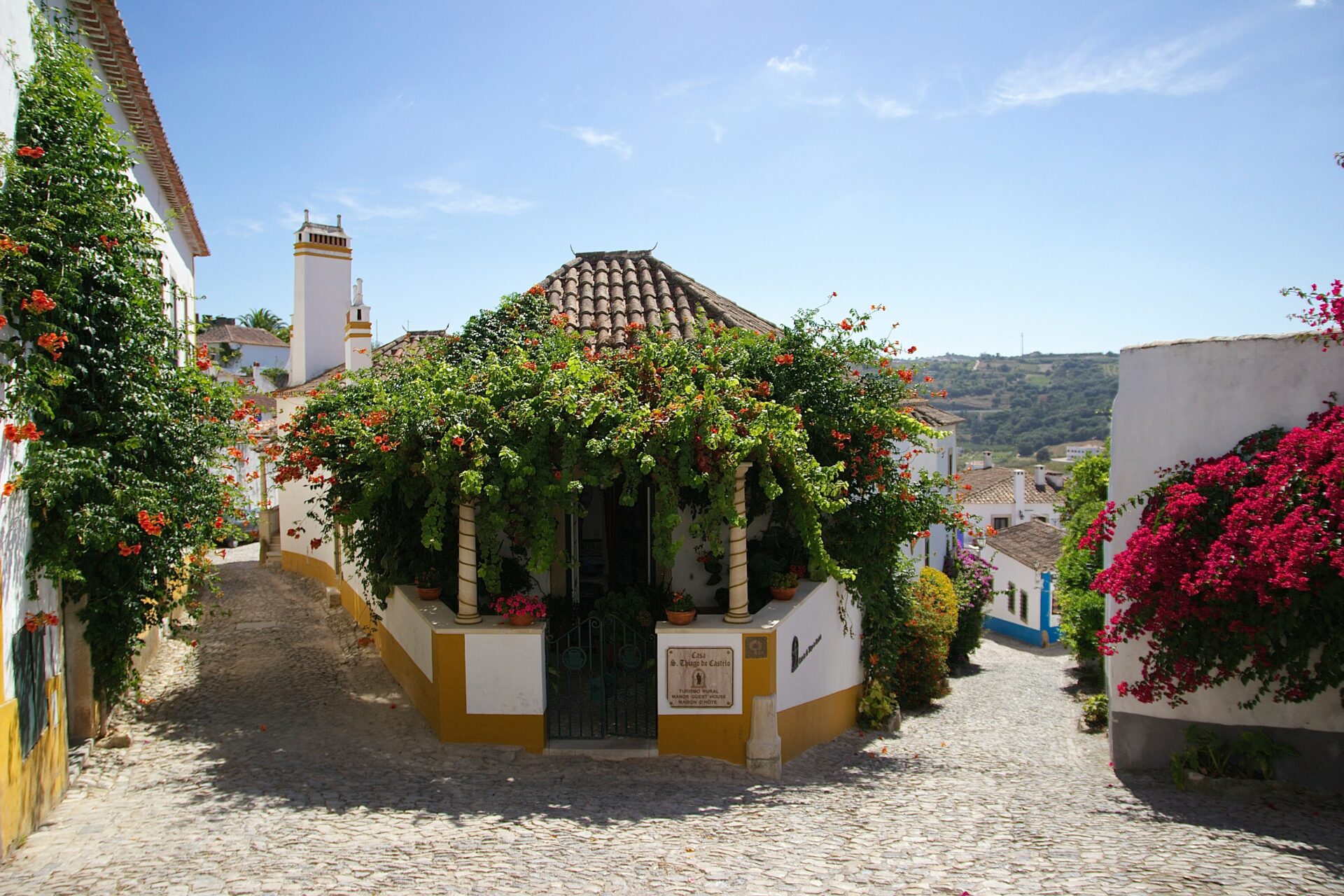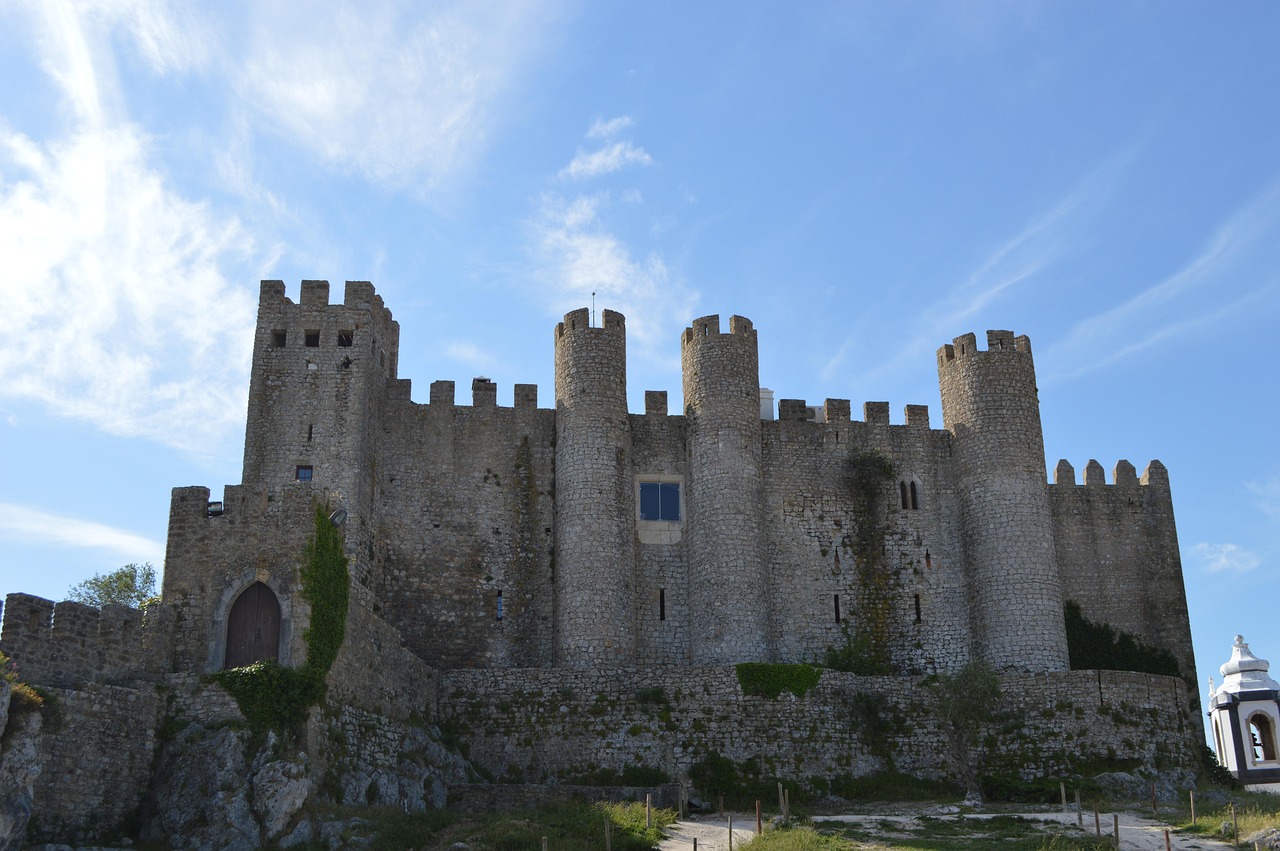Just 85 kilometers from Lisbon, the medieval village of Óbidos stole my heart the moment I stepped through its impressive Vila Gate. Walking along the narrow cobblestone streets lined with whitewashed houses adorned with colorful flowers, I felt transported back in time.
Exploring Óbidos on foot is the perfect way to experience one of Portugal’s Seven Wonders. The well-preserved castle walls offer breathtaking views of the surrounding countryside.
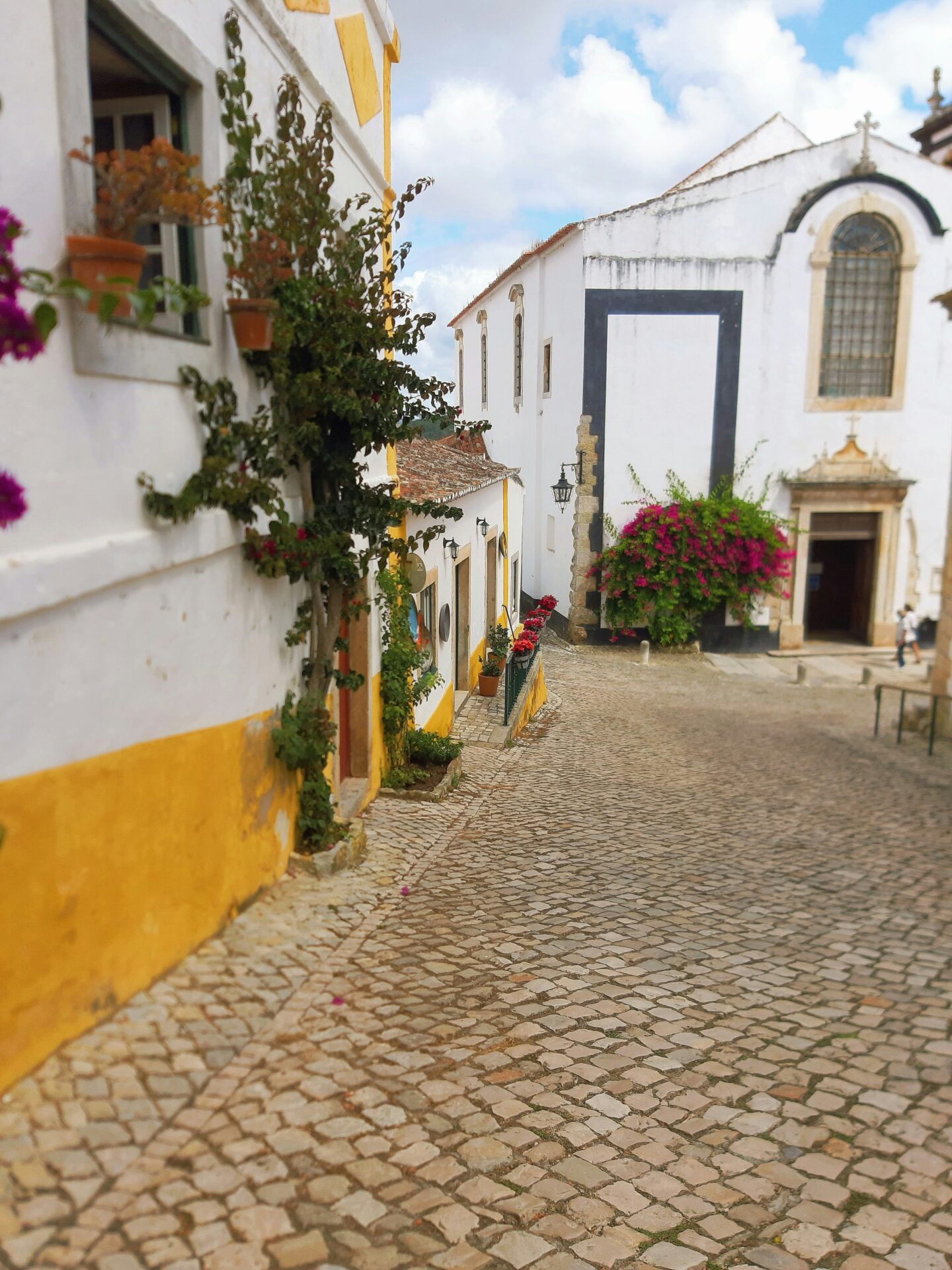
My favorite part of visiting this charming village was strolling atop the medieval walls that completely encircle the town. The path is uneven and lacks guardrails in some sections, but the panoramic views make every careful step worthwhile.
Below, the maze of streets reveals a vibrant tapestry of daily life, with locals tending to flower boxes and the scent of traditional Portuguese cuisine wafting through the air.
What makes Óbidos truly special is how it balances its historical significance with authentic Portuguese culture. Once gifted to Portuguese queens as a traditional wedding present, this “Village of Queens” maintains its royal charm while remaining refreshingly uncrowded if you visit during the right times. I recommend arriving early in the morning or late afternoon to experience the magic of Óbidos without the tour groups that arrive midday.
A Stroll Back in Time: The History of Óbidos
Walking the cobblestone streets of Óbidos feels like stepping through a portal to Portugal’s rich medieval past. The village’s story spans thousands of years, from ancient settlements to becoming a beloved royal gift.
Ancient Origins and Royal Patronage
Óbidos began as a Celtic settlement long before recorded history. The strategic hilltop location attracted many civilizations over centuries. Phoenician traders, Roman conquerors, Visigoth rulers, and Moorish forces all recognized its value and left their mark.
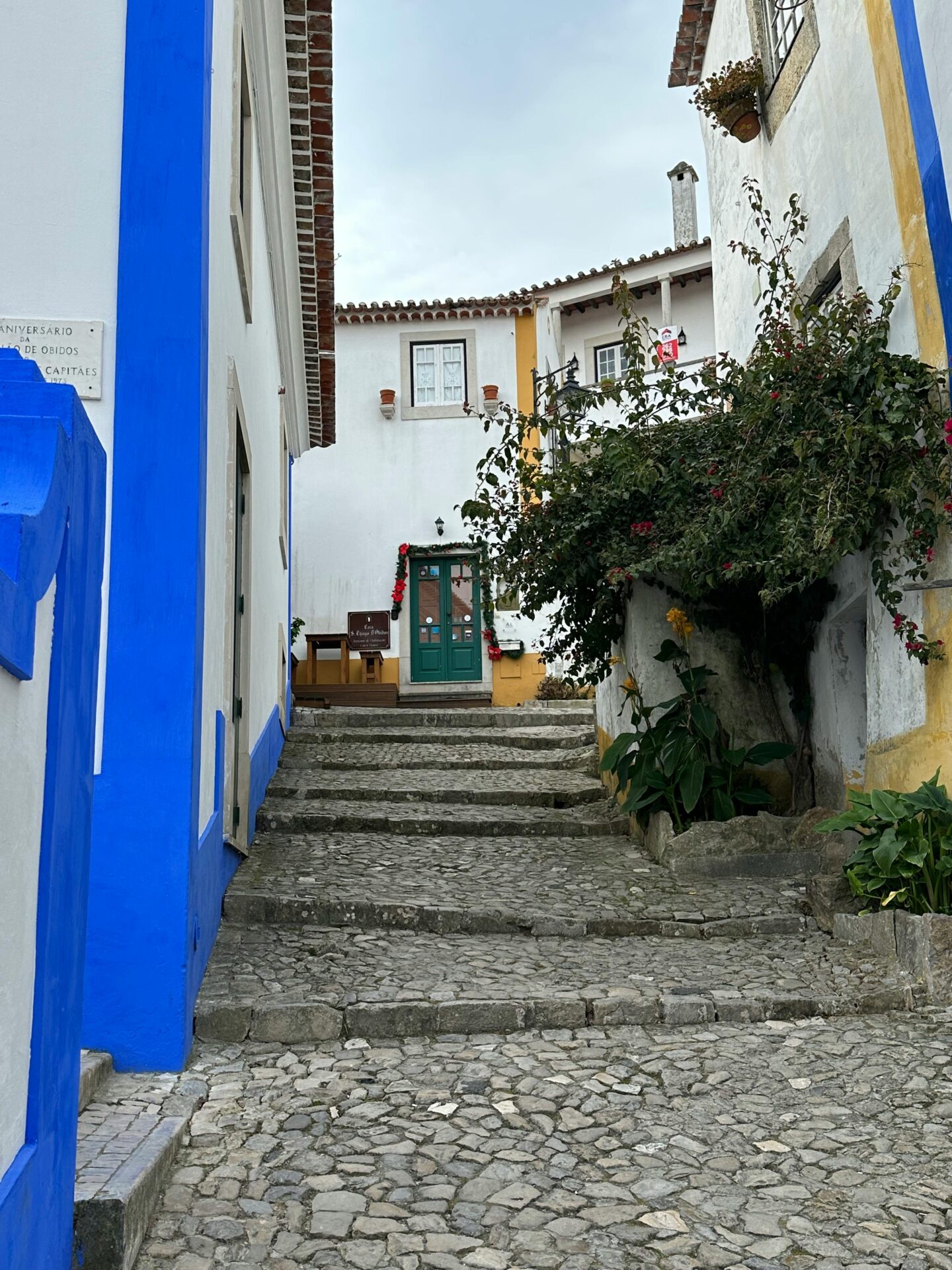
The town’s most romantic chapter began in 1282 when King Dinis gifted Óbidos to Queen Santa Isabel as a wedding present. This started a tradition lasting for centuries – Óbidos became the traditional gift from Portuguese kings to their queens!
This royal connection transformed the village. The queens invested in beautiful churches, expanded the castle, and enhanced the town walls that still encircle Óbidos today.
The Inescapable Charm of Óbidos through the Ages
Despite centuries passing, Óbidos has maintained its medieval character better than almost any town I’ve visited in Europe. The complete defensive walls still standing today date primarily from the 14th century.
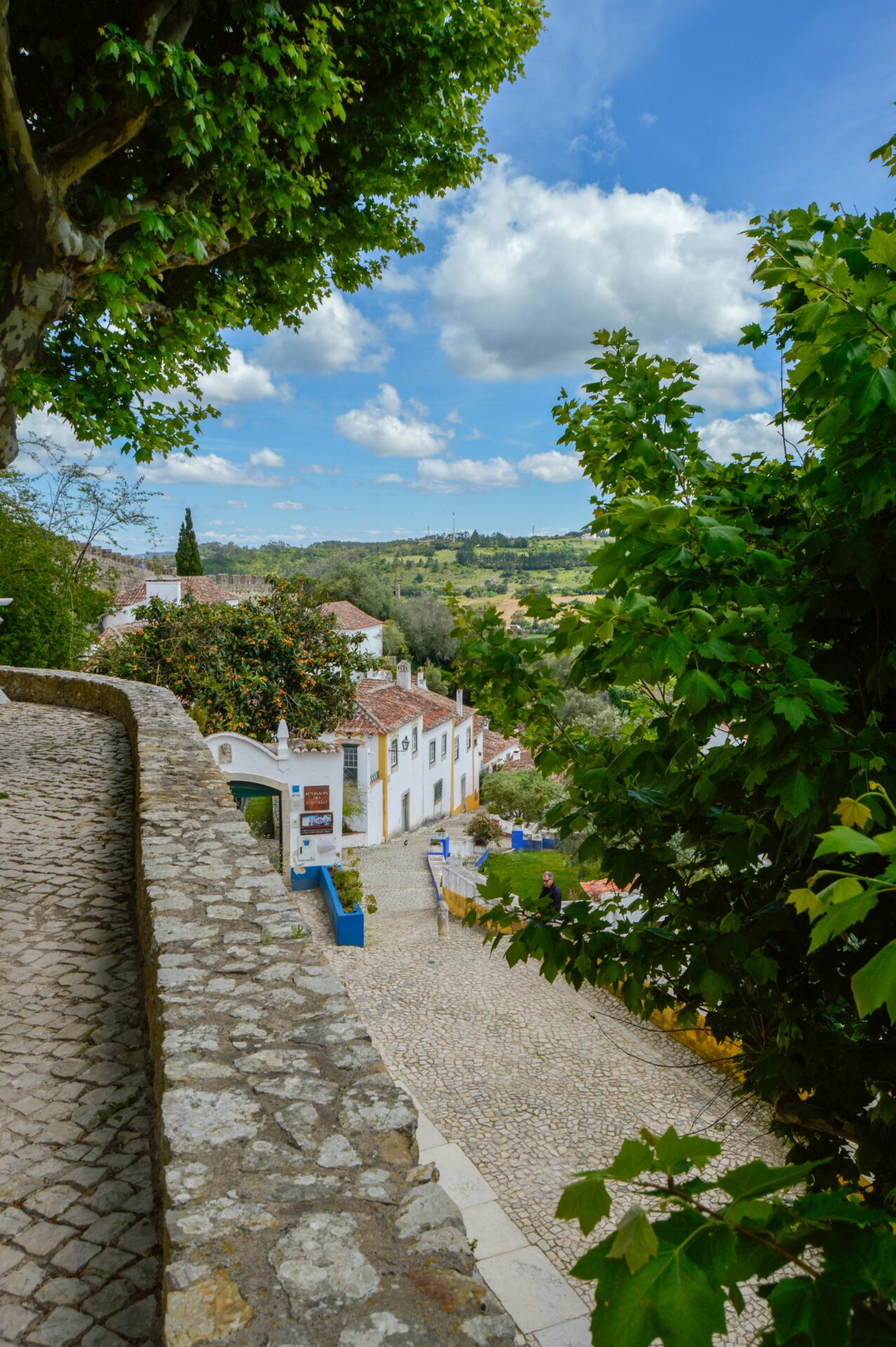
The town survived the devastating 1755 Lisbon earthquake relatively intact, preserving much of its historical architecture. In the 20th century, Portugal recognized Óbidos’ historical significance and designated it for preservation.
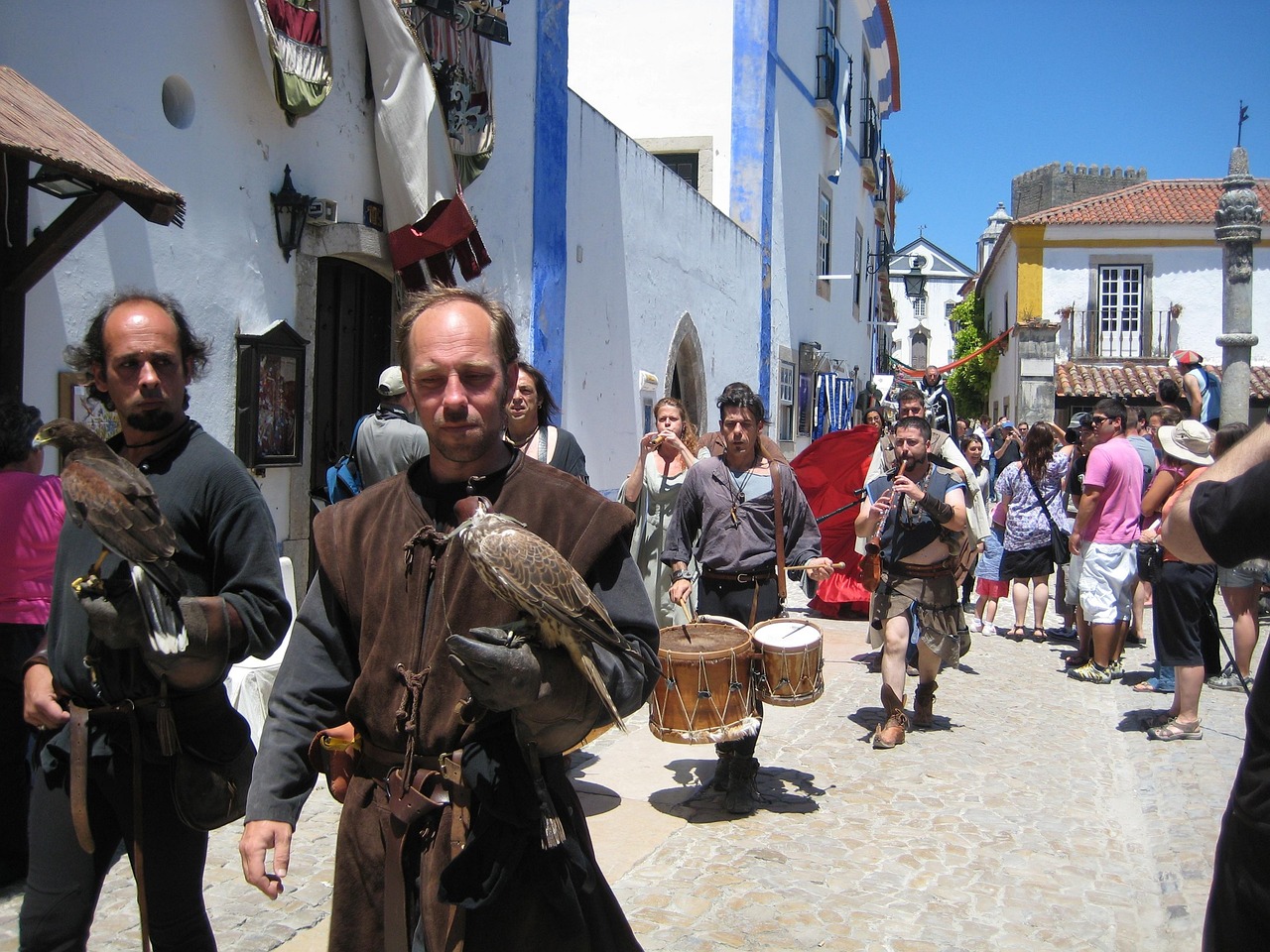
Today, I love how Óbidos balances history with modern tourism. The annual Medieval Festival recreates the atmosphere of centuries past with period costumes, crafts, and food. The Literary Town initiative filled historic buildings with bookshops, celebrating Portugal’s literary traditions.
Embarking on the Walking Tour: Discovering the Medieval Village
Setting foot in Óbidos feels like stepping back in time. The moment I passed through the main gate, I knew this walking tour would reveal the true essence of Portugal’s best-preserved medieval village.
Navigating the Winding Cobbled Streets
The cobblestone streets of Óbidos wind through the village like a maze from another era. I found myself wandering along Rua Direita, the main street lined with whitewashed houses adorned with vibrant bougainvillea.
Every corner reveals charming shops selling local crafts and the famous Ginja liqueur in chocolate cups. Don’t miss trying this sweet cherry liqueur – it’s a local tradition!
The village is compact enough to explore on foot in a few hours. I recommend joining a guided walking tour to hear fascinating stories about the town’s history and hidden spots that tourists often miss.
Some buildings date back to the 12th century, and many still maintain their original medieval architecture. The colorful blue and yellow trim on the white buildings makes for stunning photos.
The Grandeur of the City Walls
The medieval walls encircling Óbidos are perhaps the most impressive feature of this ancient village. Built in the 13th century, they stand nearly 45 feet tall in some sections.
I climbed the stone steps to walk the entire perimeter – about 1.5 kilometers around. The path is narrow in spots and lacks railings in some areas, so wear comfortable shoes and proceed with caution.
The reward for this slightly challenging walk? Breathtaking panoramic views of terracotta rooftops, the surrounding countryside, and even glimpses of the Atlantic Ocean on clear days.
At sunset, the walls take on a golden hue that photographers will adore. I spent nearly an hour just sitting on the walls, taking in the peaceful atmosphere and imagining what life was like centuries ago.
The Heart of the Village: Exploring the Castle of Óbidos
The magnificent Castle of Óbidos stands as the crown jewel of this medieval Portuguese gem. Its imposing stone walls tell stories of conquest, royal romance, and centuries of Portuguese history.
From Fortress to Royal Palace: A Historic Overview
The Castle of Óbidos dates back to Roman times, though most of what we see today was built during the Moorish occupation. King Dinis gifted the castle and surrounding village to Queen Isabel in 1282 as a wedding present – how’s that for a romantic gesture?
Walking along the ancient battlements, I was struck by how well-preserved they remain. The castle has withstood earthquakes, including the devastating 1755 Lisbon earthquake that damaged many Portuguese monuments.
What fascinates me most is how the castle transformed from a military fortress into a royal residence. Portuguese queens particularly favored Óbidos, leading to its nickname “Vila das Rainhas” (Town of Queens).
Immersive Experiences at the Castle Today
Today, part of the castle functions as a luxury pousada (historic hotel), allowing visitors to actually sleep within medieval walls. While I didn’t stay overnight, I enjoyed a coffee in the hotel’s courtyard – an experience I highly recommend.
The castle walls offer the most spectacular views of Óbidos. I spent nearly an hour walking the complete perimeter (about 1.5 km). The narrow pathways along the top require careful footing, but the panoramic vistas are worth it.
Spring visitors might catch the annual Medieval Fair, when the castle grounds transform with period costumes, food stalls, and theatrical performances. I watched knights demonstrate sword fighting techniques against the authentic backdrop of the castle walls.
Don’t miss the sunset from the western wall. The golden light bathes the white-washed buildings below in a magical glow that perfectly captures the timeless charm of Óbidos.
Cultural Immersion: Arts, Festivities, and Local Delights
Beyond the stone walls and medieval charm, Óbidos offers a vibrant cultural scene that brings the village to life throughout the year. The town’s artistic heritage and culinary traditions create unforgettable experiences for visitors seeking authentic Portuguese culture.
Annual Events and Festivals Worth Planning For
The Medieval Fair tops my list of must-see events in Óbidos. Held each July, the entire town transforms with costumed performers, traditional music, and artisans selling handcrafted goods. I was amazed to see locals and visitors alike dressed in period clothing!
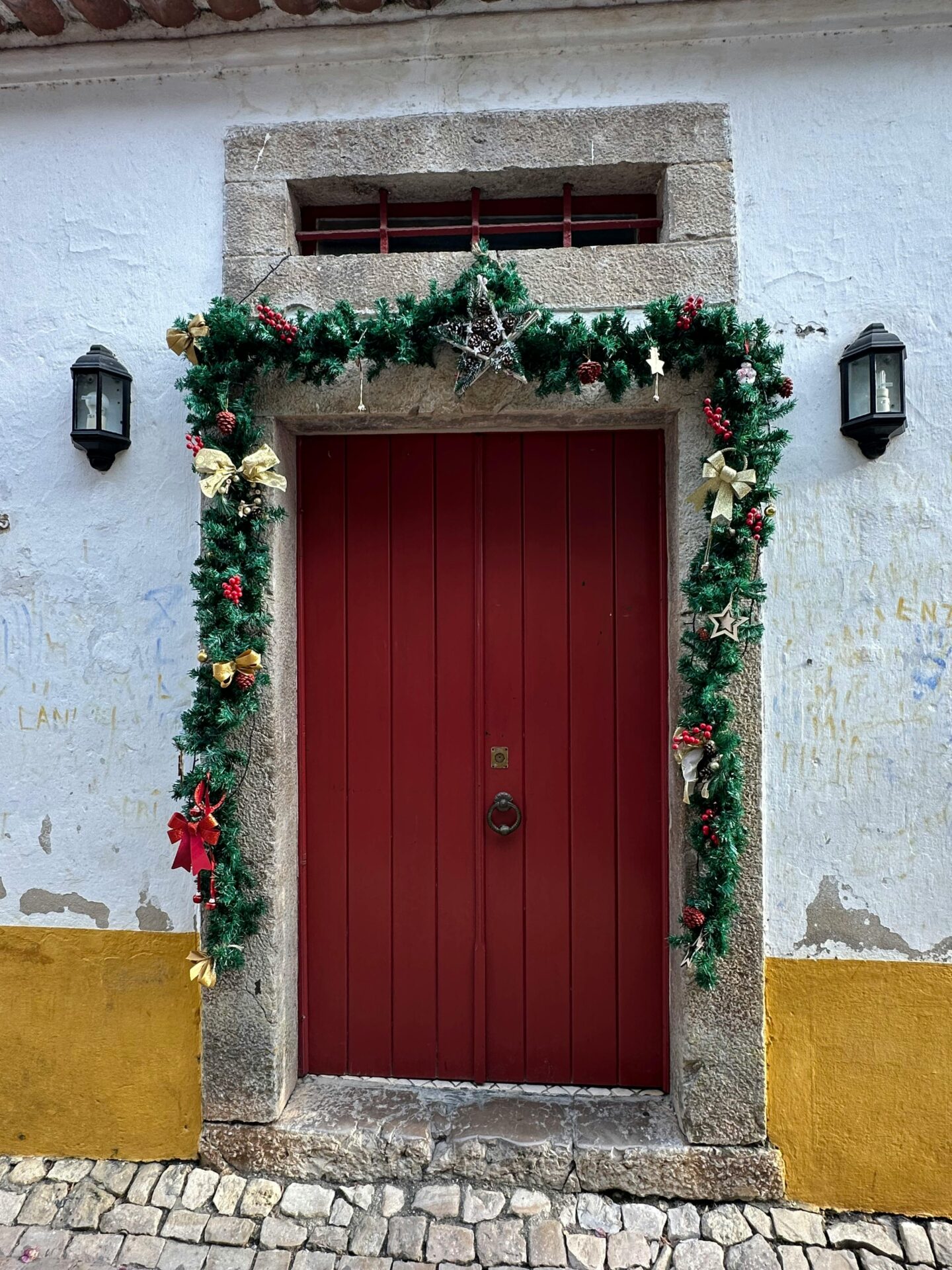
During Christmas, the Vila Natal (Christmas Village) turns Óbidos into a winter wonderland with lights, decorations, and activities for families. The atmosphere is truly magical.
Chocolate lovers shouldn’t miss the International Chocolate Festival in spring. I spent hours sampling incredible creations from chocolatiers and watching live demonstrations. The chocolate sculptures alone are worth the visit!
The Literary Town initiative has also transformed Óbidos into a book lover’s paradise, with art galleries and local craft workshops that showcase Portuguese creativity year-round.
Savoring the Flavors of Óbidos
The signature drink of Óbidos is Ginja, a sweet cherry liqueur traditionally served in small chocolate cups. I recommend trying it at one of the small shops along the main street. There, you can watch it being poured.
Local restaurants offer authentic Portuguese cuisine. You can find fresh seafood from nearby coastal waters. They also serve hearty meat stews slow-cooked to perfection, as well as regional cheeses and olive oils.
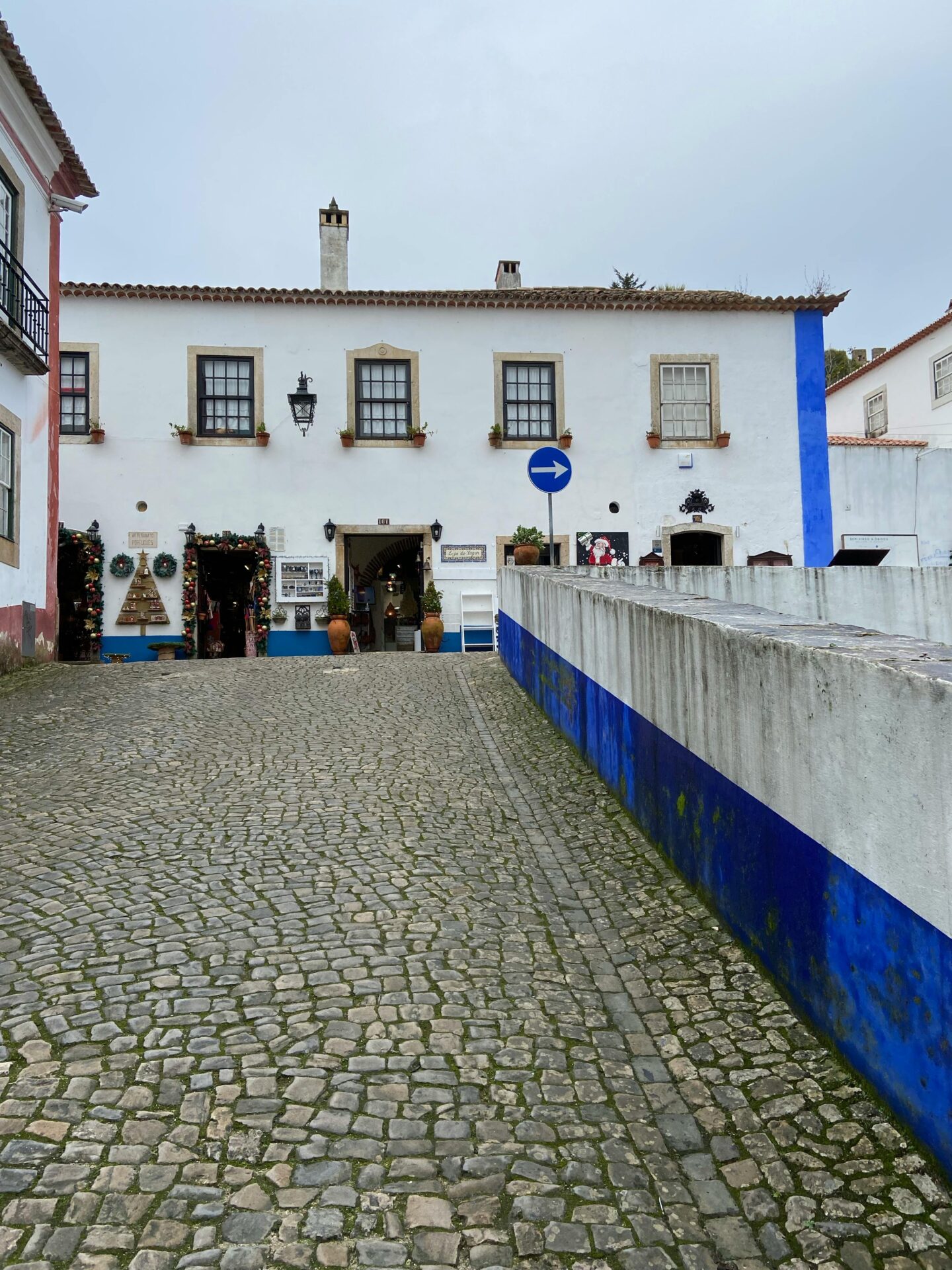
For a memorable dining experience, I enjoyed meals at small, family-run taverns. The recipes at these taverns have been passed down for generations. The patio restaurants near the castle walls provide amazing views with your meal.
Don’t leave without trying the traditional pastries. The local bakeries create delicious treats that pair perfectly with Portuguese coffee. My favorite morning ritual became grabbing a pastry and walking the quiet morning streets before other tourists arrived.

